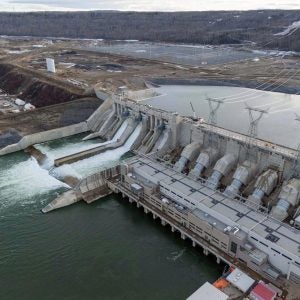The strategic environmental assessment for the Rufiji dam project in Tanzania has been described as ‘completely inadequate’ by an independent review commissioned by IUCN, the official advisor on natural World Heritage.
According to the review, the SEA document does not assess the project’s economic viability, social and environmental impacts, or project alternatives – which is the essence of such an assessment. It says that the Rufiji assessment falls “fundamentally short of both international and national guidance for [strategic environmental assessment (SEA)],” and therefore cannot be considered as one. “It certainly gives no confidence that the [Rufiji hydropower project] would be the best environmental, social or economic option to address the energy and development needs of Tanzania,” it states.
IUCN, the official advisor on natural World Heritage, commissioned the independent review after the World Heritage Committee concluded the scale of the project is to likely cause irreversible damage to Selous, which could lead to its World Heritage status being stripped. The Committee expressed utmost concern that construction had started before an SEA was conducted “to the highest international standards”.
Also known as the Stiegler’s Gorge dam project or Nyerere hydropower project, Rufiji would involve a 130m-high dam on the Rufiji River, a 914km2 reservoir, and the deforestation of nearly 1000km2 in the very heart of Selous.
SEAs are considered tools for decision-making at the early stages of an infrastructure project – before starting construction. The Rufiji assessment, issued in April 2019, came after a construction contract was signed and work began. “Given the advanced stage of project planning, this means the Rufiji assessment cannot deliver the credible input into strategic decision-making that an SEA is intended to provide,” the review states.
The review says that alternative project options, including alternative locations, are only superficially assessed. It also points to a general lack of public consultation and poor efforts to address the concerns of key stakeholders who were consulted.
Lastly, the independent review highlights that “widely available information on potential impacts have been ignored, and major potential impacts omitted.” Cumulative impacts of other projects and programmes in the Rufiji Basin are also not assessed, which the review qualifies as “a major gap compared to international good practice guidance and recent Tanzanian national policy”.
In response to the results of the review, the World Heritage Centre has expressed grave concern over the project. In a statement, it said it has closely followed the proposed dam construction and urged Tanzania not to proceed with it. The Committee’s position is that the construction of dams with large reservoirs within the boundaries of World Heritage properties is incompatible with their World Heritage status. At its last session in Baku, Azerbaijan in July 2019, the Committee concluded that the project would likely lead to irreversible damage to the site’s Outstanding Universal Value and hence fulfil the conditions for removal of the property from the World Heritage List, in accordance with Paragraph 192 of the Operational Guidelines.
The Selous Game Reserve was inscribed on UNESCO’s World Heritage List in 1982 as one of Africa’s largest wilderness areas and is home to iconic species such as the elephant and the critically endangered black rhinoceros. In 2014, the reserve had been initially included on the List of World Heritage in Danger as result of the significant decline in its elephant population due to poaching. The threat of the dam was added to the justification for danger-listing in 2018.
The Committee has urged the State Party to invite a joint World Heritage Centre/IUCN Reactive Monitoring mission to the property without further delay to review the status of the dam project, to verify the extent of the damage already incurred, and to assess the state of conservation of the property. It said it was still awaiting the Government’s invitation for the mission.
The independent review was sent to the Tanzanian Government in November 2019 for comments, but as yet no comments have been made.

All rivers within Selous Game Reserve belong to the Rufiji system, Tanzania’s largest basin. Photo IUCN/Tilman Jaeger






